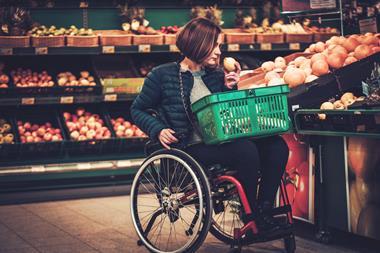H&M reported that its sales slumped during the first half of the year as the effects of the pandemic bit, but predicted that a recovery was on the horizon.
In the six months to May 31, the Swedish fashion giant’s sales decreased 23% to SEK 83.6m while profits also dropped by over SEK 3m.
The retailer said that in particular its second quarter had been hardest hit by the pandemic, with sales halving in the period because of the forced closure of 80% of its global store estate in mid-April.
H&M also noted that sales from June 1 to June 24 dropped 25% in local currencies year on year, indicating a 50% improvement from the second quarter.
Currently 350 of its stores remain closed globally, representing 7% of the total estate, but many of those stores that are open are restricted by local regulations and reduced opening hours.
Closure and openings programme redrafted
H&M has also announced an increase in the number of store closures and a reduction in the number of new store opening planned for the full year. About 170 closures and 130 openings are now proposed, resulting in a net decrease in the number of stores of approximately 40.
Chief executive Helena Helmersson said: ”Before the pandemic hit, we performed strongly – a result of many years of long term investments to create the best offering for our customers and to meet the digital shift in the industry. This, combined with the fact that we have acted quickly to counter the negative effects of Covid-19 and that we are speeding up the transformation of the H&M group, makes me convinced that we will come out of the current crisis stronger.
“At most around 80% of our stores were closed in the second quarter and in those markets where stores were open, demand was significantly subdued. Although we took rapid and decisive action which reduced our costs considerably, it was impossible to compensate for the 50% drop in revenue and, as we had previously communicated, the quarter was loss-making.
“During the pandemic it became clear how important it is that the digital and physical channels interact to meet customers’ needs. When the majority of the stores were temporarily closed in the second quarter, we focused on redirecting product flow to our digital channels, which remained open at all times in nearly all of our online markets. Online sales increased by 36% in SEK during the quarter. The positive development of online sales has continued since we began reopening our stores. As the stores have reopened, our total sales have gradually begun to recover.”


























No comments yet